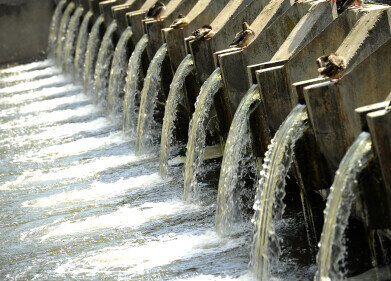Water Pollution Monitoring
China Grants Millions to Cities to Tackle Water Pollution
Mar 04 2019
The Chinese government has announced that it will provide a handful of cities with additional funding to allow them to clean up their highly-polluted rivers and waterways. Approximately 20 cities were selected for the pilot scheme at the end of last year, with more being earmarked for future years if all goes well.
Each of the chosen cities will receive an additional 600 million yuan (£68.7 million) per year until 2020 as the government aims to clean up the “black and stinking” contamination of certain rivers. Indeed, the overall cost of the operation could rise to as much as one trillion yuan (£114.5 billion), according to the director of the water department in the Chinese environment ministry, Zhang Bo.
“Black and stinking”
The government uses the strong and evocative terminology to describe the state of some Chinese rivers as it battles a chronic problem which poses an environmental and health hazard to those living in the vicinity of the afflicted waterways. China is also hoping that eliminating such pollution will allow it to capitalise on those water reserves and use them for other projects, such as agricultural and manufacturing water supplies.
A total of 39 cities were named and shamed last August by the Chinese government for failing to meet their environmental obligation with regard to water quality in the first half of 2018. The first 20 to benefit from the aid scheme have already been named and it’s expected the others will receive similar funding in the future.
Cleaning up their act
Cognisant of the fact that high-resolution monitoring is necessary for river conservation, the government are directing municipalities to spend the money on innovative engineering solutions and tighter enforcement of pollution-control legislation.
The chosen cities are also being encouraged to participate in alternative methods of raising capital, such as entering into public-private partnerships. It’s hoped that diversifying their income streams will allow municipalities to invest greater sums in water pollution and wastewater treatment methods and plants.
Showing signs of progress
The latest official statistics have shown small signs of progress. The latest round of sample-taking from sites all across the country revealed that 70% of groundwater is acceptable for human usage, which is an improvement upon the 67.9% reported in 2017. Meanwhile, 6.9% of samples were found to have “lost all functionality”, which again is an improvement on the 8.3% discovered last year. The government are hoping to bring that percentage down to 5% by the end of 2020.
China is also looking to clean up the water quality of its seas and surrounding bays, as well as inland waterways. Last year, a new washwater monitor was installed on a scrubber retrofit in order to boost the old vessel’s environmental credentials and work towards a broader goal of eliminating unnecessary pollution.
Digital Edition
AET 28.4 Oct/Nov 2024
November 2024
Gas Detection - Go from lagging to leading: why investment in gas detection makes sense Air Monitoring - Swirl and vortex meters will aid green hydrogen production - Beyond the Stack: Emi...
View all digital editions
Events
Nov 27 2024 Istanbul, Turkey
H2O Accadueo International Water Exhibition
Nov 27 2024 Bari, Italy
Biogas Convention & Trade Fair 2024
Nov 27 2024 Hanover, Germany
Dec 02 2024 London, UK
Dec 03 2024 Dusseldorf, Germany

-min.jpg)








.jpg)








